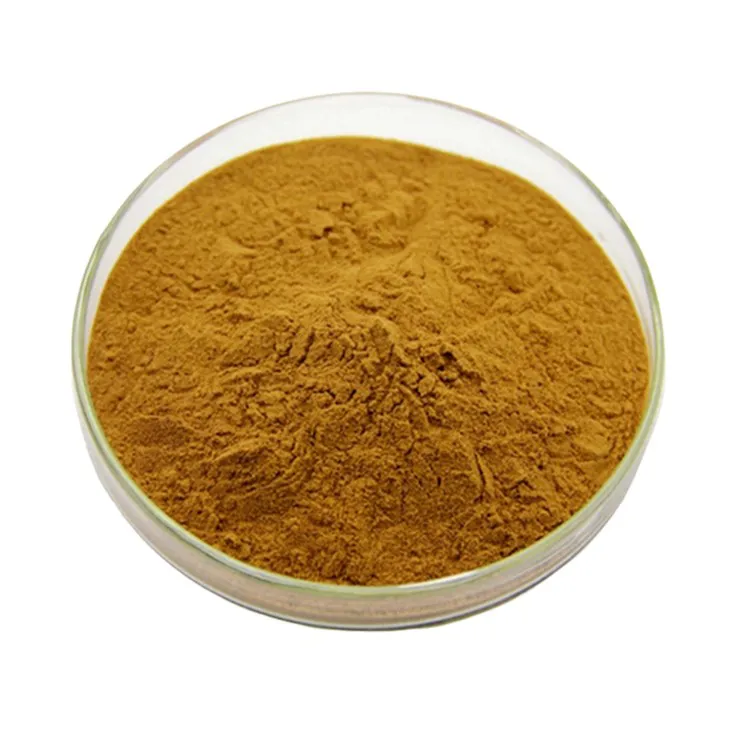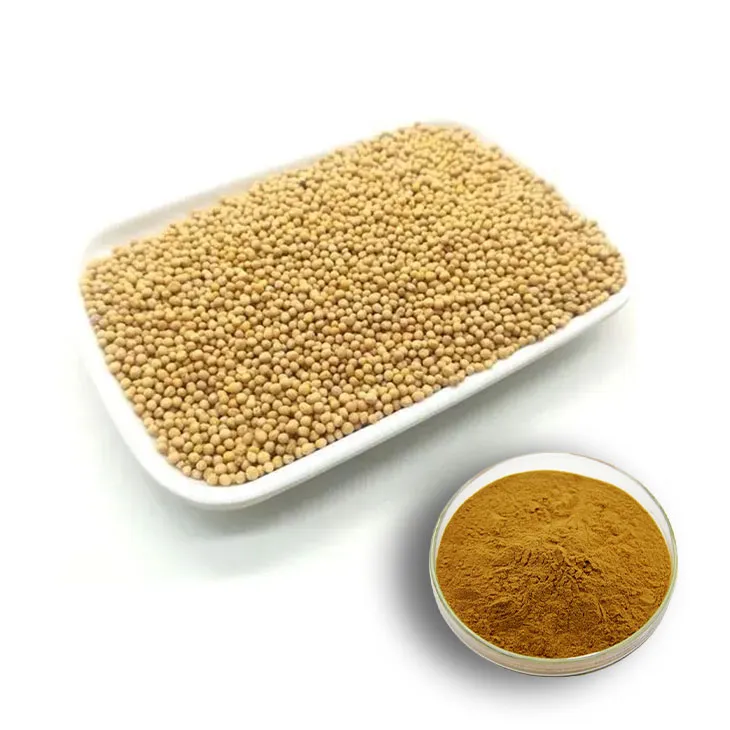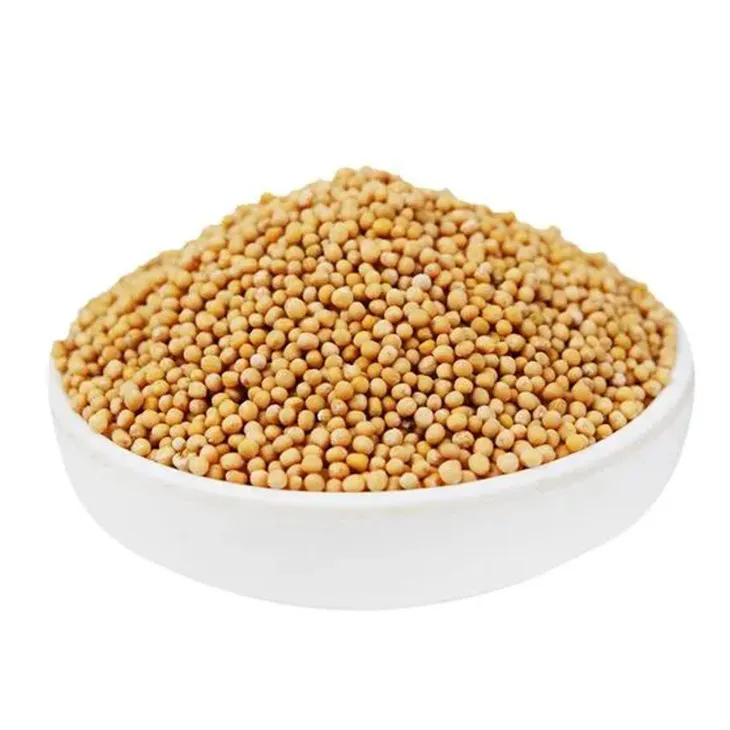- 0086-571-85302990
- sales@greenskybio.com
White Mustard Seed Extract: From Leaves to Extraction.
2024-11-14

1. Introduction
White mustard (Sinapis alba) has been recognized for its various properties for centuries. White mustard seed extract has gained increasing attention in recent years due to its potential applications in health, food, and agriculture. This article will explore the journey from the leaves of the white mustard plant to the extraction of its valuable components.

2. Botanical Aspects of White Mustard
2.1 Plant Structure
White mustard is an annual plant that typically grows to a height of 30 - 100 cm. It has a branched stem with lobed leaves. The leaves are arranged alternately on the stem. The lower leaves are larger and more deeply lobed compared to the upper ones. The plant also produces yellow flowers which are clustered in racemes. These flowers are important for the reproduction of the plant and later develop into seed pods.2.2 Growth Conditions
White mustard prefers well - drained soil and full sun exposure. It can tolerate a wide range of soil pH levels, from slightly acidic to slightly alkaline. The plant is relatively easy to grow and can be cultivated in temperate regions around the world. It has a relatively short growing season, usually from spring to early summer.
3. Initial Steps of Preparation
3.1 Harvesting
The first step in the process of obtaining White mustard seed extract is the proper harvesting of the plant. The seeds are usually harvested when the seed pods turn yellow - brown and begin to dry out. This indicates that the seeds are mature. Harvesting should be done carefully to avoid damaging the seeds. The leaves can also be harvested at the same time if they are going to be used in the extraction process.3.2 Cleaning
Once harvested, the seeds and leaves need to be thoroughly cleaned. This involves removing any dirt, debris, or other foreign materials. For the seeds, this can be done by sieving or using air - blowing techniques to separate the seeds from unwanted particles. The leaves may need to be washed gently and then dried before further processing.
4. Complex Extraction Procedures
4.1 Solvent Extraction
One of the most common methods for extracting components from white mustard seeds and leaves is solvent extraction. Different solvents can be used depending on the desired components. For example, ethanol is often used as a solvent because it is relatively safe and can effectively extract many of the bioactive compounds present in white mustard. The seeds or leaves are soaked in the solvent for a certain period of time, usually several hours to a few days. During this time, the solvent penetrates the plant material and dissolves the target compounds.4.2 Pressurized Liquid Extraction
Pressurized liquid extraction (PLE) is another technique that can be used. In PLE, the plant material is placed in a high - pressure chamber along with the solvent. The increased pressure and temperature can enhance the extraction efficiency. This method is often faster than traditional solvent extraction and can result in a higher yield of the desired extract. However, it requires more specialized equipment.4.3 Supercritical Fluid Extraction
Supercritical fluid extraction (SFE) is a more advanced extraction method. Supercritical carbon dioxide is often used as the extraction fluid. At supercritical conditions, carbon dioxide has properties between a gas and a liquid, which allows it to effectively penetrate the plant material and extract the target compounds. SFE has the advantage of being a "green" extraction method as carbon dioxide is non - toxic and can be easily removed from the final extract.
5. Potential Applications in Health
5.1 Anti - inflammatory Properties
White mustard seed extract has been shown to possess anti - inflammatory properties. The bioactive compounds present in the extract can help reduce inflammation in the body. This may be beneficial for conditions such as arthritis, where chronic inflammation is a major problem.5.2 Digestive Health
The extract can also play a role in digestive health. It may help stimulate the production of digestive enzymes, which can improve the digestion and absorption of nutrients. Additionally, it may have a mild laxative effect, helping to prevent constipation.6. Applications in Food
6.1 Flavoring Agent
White mustard seed extract can be used as a flavoring agent in the food industry. It has a characteristic pungent and slightly bitter taste that can add depth and complexity to various food products. It is often used in condiments such as mustard, salad dressings, and marinades.6.2 Preservative
Some of the compounds in the white mustard seed extract have antimicrobial properties. This makes it a potential natural preservative for food products. By inhibiting the growth of bacteria, yeasts, and molds, it can extend the shelf life of foods.7. Applications in Agriculture
7.1 Pest Control
The extract can be used as a natural pesticide. It has been found to repel or inhibit the growth of certain pests. This can reduce the need for synthetic pesticides, which are often harmful to the environment and non - target organisms.7.2 Plant Growth Promotion
White mustard seed extract may also have a role in promoting plant growth. It can contain nutrients and bioactive compounds that can stimulate root development, improve nutrient uptake, and enhance overall plant vigor.8. Conclusion
White mustard seed extract has a wide range of potential applications in health, food, and agriculture. The journey from the leaves to the extraction process is complex and involves multiple steps, from the proper cultivation and harvesting of the plant to the choice of extraction method. As research continues, more about the properties and potential uses of white mustard seed extract will be discovered, making it an even more valuable resource in the future.
FAQ:
What are the main botanical features of white mustard?
The white mustard (Sinapis alba) is an annual plant. It typically has lobed leaves that are covered with hairs. The plant can grow to a certain height, usually around 30 - 100 cm. It produces small yellow flowers and forms pods containing the seeds which are the main source for extraction.
What are the initial steps in preparing white mustard for extraction?
First, the white mustard plants are harvested at the appropriate time when the seeds are mature enough. Then, the seeds are separated from the pods. After that, the seeds may be cleaned to remove any impurities such as dirt or damaged seeds. This initial preparation ensures that only high - quality seeds are used for the extraction process.
What are the common extraction methods for white mustard seed extract?
One common method is solvent extraction. In this process, a suitable solvent such as ethanol or hexane is used. The seeds are soaked in the solvent which helps to dissolve the active compounds. Another method could be supercritical fluid extraction which uses supercritical carbon dioxide. This method is often preferred as it can produce a purer extract and is more environmentally friendly compared to some traditional solvent - based methods.
What are the potential applications of white mustard seed extract in the health field?
White mustard seed extract may have anti - inflammatory properties, which could be beneficial for conditions related to inflammation such as arthritis. It may also have antibacterial properties that can help in fighting certain infections. Additionally, it might be used in dietary supplements for its potential to aid in digestion as it may contain compounds that stimulate the digestive system.
How can white mustard seed extract be used in the food industry?
In the food industry, white mustard seed extract can be used as a flavoring agent. It can add a unique spicy and tangy flavor to various products such as sauces, dressings, and marinades. It can also act as a preservative due to its antibacterial properties, helping to extend the shelf - life of food products.
Related literature
- Title: White Mustard: Botany, Chemistry and Pharmacology"
- Title: "Extraction Techniques for Mustard Seed Compounds: A Review"
- Title: "The Potential of White Mustard Seed Extract in Food Preservation"
- ▶ Hesperidin
- ▶ citrus bioflavonoids
- ▶ plant extract
- ▶ lycopene
- ▶ Diosmin
- ▶ Grape seed extract
- ▶ Sea buckthorn Juice Powder
- ▶ Beetroot powder
- ▶ Hops Extract
- ▶ Artichoke Extract
- ▶ Reishi mushroom extract
- ▶ Astaxanthin
- ▶ Green Tea Extract
- ▶ Curcumin Extract
- ▶ Horse Chestnut Extract
- ▶ Other Problems
- ▶ Boswellia Serrata Extract
- ▶ Resveratrol Extract
- ▶ Marigold Extract
- ▶ Grape Leaf Extract
- ▶ blog3
- ▶ blog4
- ▶ blog5
-
Organic Tongkat Ali extract powder factory.
2024-11-14
-
How to make powder with ashwagandha extract.
2024-11-14
-
Rosehip extract manufacturers from China.
2024-11-14
-
The best cat's claw extract in nature.
2024-11-14
-
Chinese Dandelion Leaf Extract Suppliers.
2024-11-14
-
Hericium erinaceus extract powder
2024-11-14
-
Thunder God Vine Extract
2024-11-14
-
Reishi mushroom extract
2024-11-14
-
Uridine-5'-monophosphate Disodium salt
2024-11-14
-
Acerola Extract
2024-11-14
-
Lemon Juice Powder
2024-11-14
-
Ivy Extract
2024-11-14
-
Bayberry Extract
2024-11-14
-
Coix Seed Extract
2024-11-14
-
Rose Hip Extract
2024-11-14





















